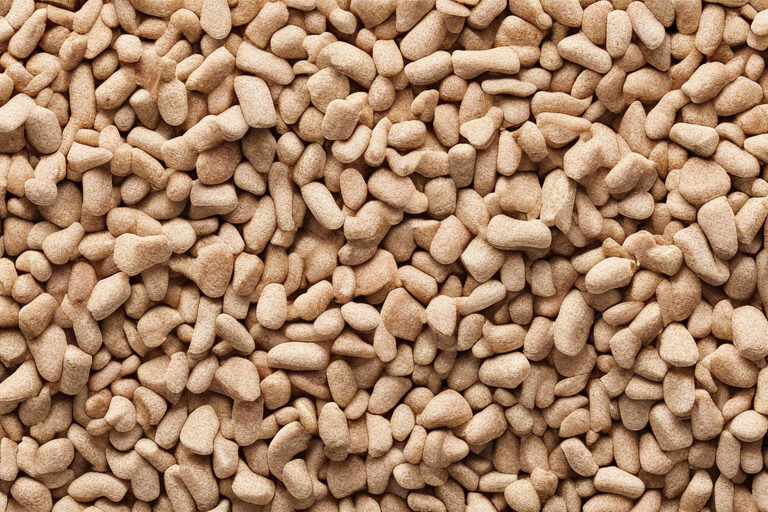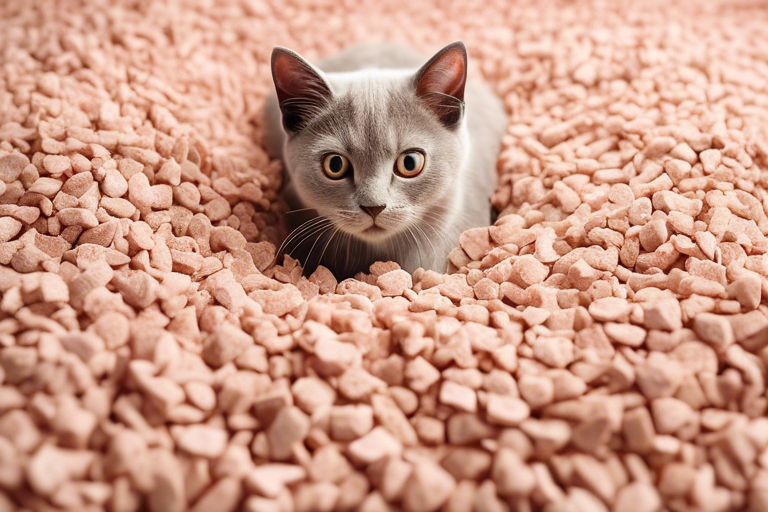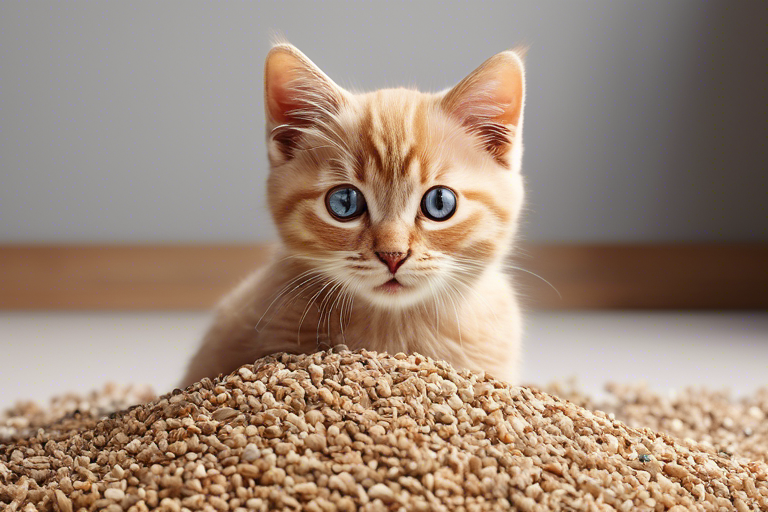Cat litter is an essential item for cat owners, providing a designated space for cats to eliminate their waste and maintaining cleanliness and hygiene in our homes. However, many cat owners have wondered why cat litter so expensive. In this comprehensive guide, we will explore the reasons behind the high cost of cat litter and provide practical tips on how to save money without compromising the quality of your cat’s litter.
Understanding the Factors Behind the Cost of Cat Litter
Cat litter prices can vary significantly depending on various factors. To understand why cat litter is expensive, let’s delve into these factors:
1. Raw Materials and Manufacturing Costs
The production of cat litter involves the use of specific raw materials such as clay, silica, recycled paper, or plant-based materials. These materials undergo a series of processes, including mining, refining, processing, and manufacturing, which require labor, machinery, and energy costs. The cost of raw materials and the complexity of the manufacturing process contribute to the overall price of cat litter.
2. Quality and Performance
Cat litter manufacturers invest in research and development to improve the quality and performance of their products. They strive to create litters that offer superior odor control, clumping ability, absorbency, and dust reduction. These advancements in litter technology require additional investments in research, development, and quality control, which ultimately impact the price of the cat litter.
3. Packaging and Distribution
The packaging and distribution of cat litter also add to the overall cost. Cat litter packaging is designed to preserve freshness, prevent leakage, and provide convenience for consumers. Sturdy packaging materials, such as plastic bags or containers, incur additional expenses. Moreover, the logistics of packaging and distributing cat litter involve transportation, warehousing, and distribution center costs. These factors contribute to the final price of cat litter.
4. Brand Reputation and Quality
Established brands with a strong reputation for producing high-quality cat litter often command higher prices. Customers are willing to pay a premium for the assurance of superior performance, reliability, and an overall better cat litter experience. Brand reputation and quality play a significant role in influencing pricing strategies.
5. Promotional Strategies
Cat litter manufacturers employ various promotional strategies to create brand awareness and communicate the unique selling points of their products. These marketing efforts, including advertisements, promotions, and endorsements, require additional expenses that are factored into the pricing of the product.
6. Market Competition
The cat litter market is highly competitive, with numerous manufacturers vying for consumers’ attention. This competition drives innovation and motivates brands to differentiate themselves by offering unique features or superior quality. The competitive nature of the market can influence pricing strategies as brands strive to establish their products as premium options.
7. Retail Markup
The prices set by manufacturers are not the final prices paid by consumers. Retailers add their markup to cover their expenses and make a profit. The percentage of markup can vary depending on factors such as location, overhead costs, and competition among retailers.
8. Inflation and Cost of Living
Fluctuations in the broader economy, including rising operational costs, wages, or energy expenses, can affect the pricing dynamics of cat litter. Inflation and the cost of living can lead to increased product prices.

Types of Cat Litter and Their Cost Considerations
Cat litter comes in various types, each with its unique features, benefits, and price points. Understanding the different types of cat litter can help you make informed decisions while considering your budget:
1. Traditional Clay Litter
Traditional clay litter is the most widely used and recognized type of cat litter. It is made from natural clay minerals that have been processed for use as litter. Clay litter offers excellent odor control and clumping ability, making it easy to clean. However, it can produce dust, which may be a concern for cats with respiratory sensitivities or households with multiple cats. Clay litter is generally more affordable compared to other types of litter.
2. Silica Gel Litter
Silica gel litter is a newer type of cat litter that is gaining popularity. It is made from silica beads that absorb and trap moisture, effectively controlling odors. Silica gel litter is lightweight, low-dust, and doesn’t clump, making it easy to scoop. While it tends to be more expensive than clay litter, its superior odor control and long-lasting properties can make it cost-effective in the long run.
3. Recycled Paper Litter
For eco-conscious cat owners, recycled paper litter offers a sustainable option. It is made from processed recycled paper products and is highly absorbent, controls odors well, and is virtually dust-free. Recycled paper litter is biodegradable and eco-friendly. While it may be more expensive than clay litter, the environmental benefits may outweigh the higher cost for many pet owners.
4. Plant-Based Litter
Plant-based litter is made from natural materials such as corn, wheat, or pine. These litters are biodegradable and often flushable, providing an eco-friendly solution. Plant-based litters offer varying degrees of clumping ability and odor control, depending on the specific material used. While they can be more expensive than traditional clay litter, they offer a natural and sustainable alternative.
When selecting a cat litter, it’s essential to consider your cat’s preferences, your lifestyle, and your budget. Evaluating the cost and benefits of each type of litter can help you make an informed decision.

How to Save Money While Buying Cat Litter
While cat litter can be expensive, there are several strategies you can employ to save money without compromising on quality:
1. Buy in Bulk
Buying cat litter in bulk can save you money in the long run. Many pet stores offer discounts when you purchase larger quantities of cat litter. Online platforms and subscription services also offer bulk-buying options. However, make sure you have enough storage space to keep the litter fresh and dry.
2. Look for Sales and Promotions
Keep an eye out for sales, promotions, and discounts offered by retailers or online stores. Check local pet stores, supermarkets, or online platforms for deals on cat litter. Subscribing to newsletters or joining loyalty programs can give you access to exclusive offers and coupons.
3. Explore Alternative Brands
Don’t limit yourself to well-known brands. Lesser-known brands often offer quality cat litter at a lower price. Read reviews and consider trying out different brands to find one that suits your cat’s needs and your budget.
4. Try Different Types of Cat Litter
Experimenting with different types of cat litter can help you find a more cost-effective option without compromising quality. Consider trying different litter materials or formulations to see what works best for your cat. It may require some trial and error, but ultimately, you can find a litter that balances performance and affordability.
5. Use Less Litter
You may be using more cat litter than necessary. Experiment with using less litter and see if it still effectively absorbs moisture and controls odor. Starting with a small amount and adding more as needed can help you save money over time.
6. Clean the Litter Box Regularly
Regularly scooping and maintaining the litter box can help extend the lifespan of the litter. It also prevents the growth of bacteria and reduces odor. Make sure to scoop out the litter box at least once a day and clean the entire box with warm water and soap once a week.
7. Consider a Cat Litter Subscription
Many pet stores offer cat litter subscriptions that can help you save money on your cat litter purchases. These subscriptions typically offer a discount on cat litter and can be set up to deliver a certain amount of cat litter at regular intervals. This ensures that you never run out of cat litter and can save you money over time.
8. DIY Alternatives
Consider DIY alternatives to expensive cat litter. Shredded newspaper, wood pellets, or sand can be used as cost-effective options. However, ensure the safety and well-being of your cat when using these alternatives.
By implementing these money-saving strategies, you can provide your cat with a clean litter box without breaking the bank.
Frequently Asked Questions
Q: Why is cat litter so expensive compared to other pet products?
A: Cat litter’s higher price compared to other pet products can be attributed to the materials used, manufacturing processes, branding, packaging, and supply chain expenses.
Q: Are expensive cat litters worth the price?
A: Expensive cat litters often offer added features, superior performance, or eco-friendly benefits that can enhance the overall litter experience.
Q: Can I find affordable cat litter options without compromising quality?
A: Yes, there are affordable cat litter options available that still provide good quality. Conventional clay litters often offer a reliable choice at a more budget-friendly price. Exploring different brands and types of litter can help find a balance between cost and performance.
Q: How can I reduce my cat litter expenses without sacrificing cleanliness?
A: To reduce cat litter expenses, consider switching to a litter that offers a longer-lasting performance, such as silica crystal litter. Additionally, regularly scooping and maintaining the litter box can help extend the lifespan of the litter.
Q: Are there any DIY alternatives to expensive cat litter?
A: There are DIY alternatives to cat litter, such as using shredded newspaper or wood shavings. However, you have to change it from time to time to ensure the safety and well-being of your cat.
Q: What factors should I consider when selecting a cat litter within my budget?
A: When selecting a cat litter within your budget, consider factors such as odor control, absorbency, dust levels, clumping ability, and any specific preferences or requirements your cat may have.
In conclusion, the high cost of cat litter is influenced by various factors such as raw materials, manufacturing costs, quality and performance, packaging, and brand reputation. By exploring different types of cat litter, considering cost-saving strategies, and being open to alternative brands, you can make informed purchasing decisions while providing your cat with a clean and comfortable litter box.







Nice Blog posts